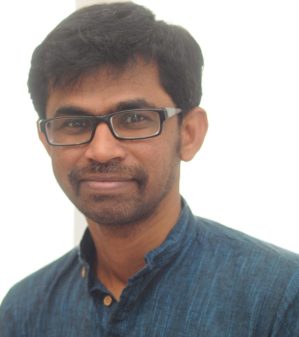
Post Doctoral Fellow
Ph.D.: Free University Berlin, Germany
Hometown: Chennai, Tamilnadu, India
Mentor: Dr. Roger Pechous
Lab: Biomed1 Room 508
Phone: 501-686-5317
I received my Ph.D. in Biomedical Sciences from Free University Berlin, Germany in Aug, 2019. During my Ph.D. research, I studied Brugia malayi cystatin induced immunomodulation on human monocytes and macrophages and also identified some of the candidate gene polymorphisms which are associated with chronic lymphatic filariasis. Then, I joined Dr. Tiffany Weinkopff’s lab as a postdoctoral fellow in Nov, 2019 to investigate the host immune responses and the key molecules responsible for the inflammation in a murine model of cutaneous leishmaniasis. The primary focus of Dr. Weinkopff’s lab is to determine the factors that control both lesion development and resolution during leishmaniasis. Specifically, I was trying to understand the role and contribution of mTOR signalling in blood endothelial cell (BEC) activation that could possibly mediate the immune cell migration into the inflamed tissue during Leishmania major infections. In Jan 2023, I joined Dr. Roger Pechous lab, to study and characterize the bacterial and host factors responsible for the biphasic progression of pneumonic plague. Yersinia pestis, the etiological agent of pneumonic plague, is an intracellular Gram-negative bacterium and one of the deadly pathogens in the world, which is grouped under NIAID category A priority pathogen. In Dr. Pechous lab, I am trying to characterize the host/pathogen interactions using the murine infection model of pneumonic plague. More specifically, I am studying the molecular mechanism involved and contribution of Y. pestis protein YbtX to the onset of host pro-inflammatory responses during pneumonic plague.
Relevant Publications
- Venugopal G, Bird JT, Washam CL, Roys H, Bowlin A, Byrum SD, Weinkopff T. In vivo transcriptional analysis of mice infected with Leishmania major unveils cellular heterogeneity and altered transcriptomic profiling at single-cell resolution. PLoS Negl Trop Dis. 2022 Jul 5;16(7):e0010518. Doi: 10.1371/journal.pntd.0010518
- Venugopal G, O’Regan NL, Babu S, Schumann RR, Srikantam A, Merle R, Hartmann S, Steinfelder S. Association of a PD-L2 Gene Polymorphism with Chronic Lymphatic Filariasis in a South Indian Cohort. Am J Trop Med Hyg. 2019 Feb;100(2):344-350. doi: 10.4269/ajtmh.18-0731.
- Venugopal G, Mueller M, Hartmann S, Steinfelder S. Differential immunomodulation in human monocytes versus macrophages by filarial cystatin. PLoS One. 2017 Nov 15;12(11):e0188138. doi: 10.1371/journal.pone.0188138.
